It’s finally happening! After a boring, bland winter, your fuchsia plants are starting to bud out. But then the unthinkable takes place – the buds start to sprinkle down like raindrops.
What’s happening?!
Bud drop can occur at the beginning of the growing season in the late spring, or plants in full bloom might start to drop buds.
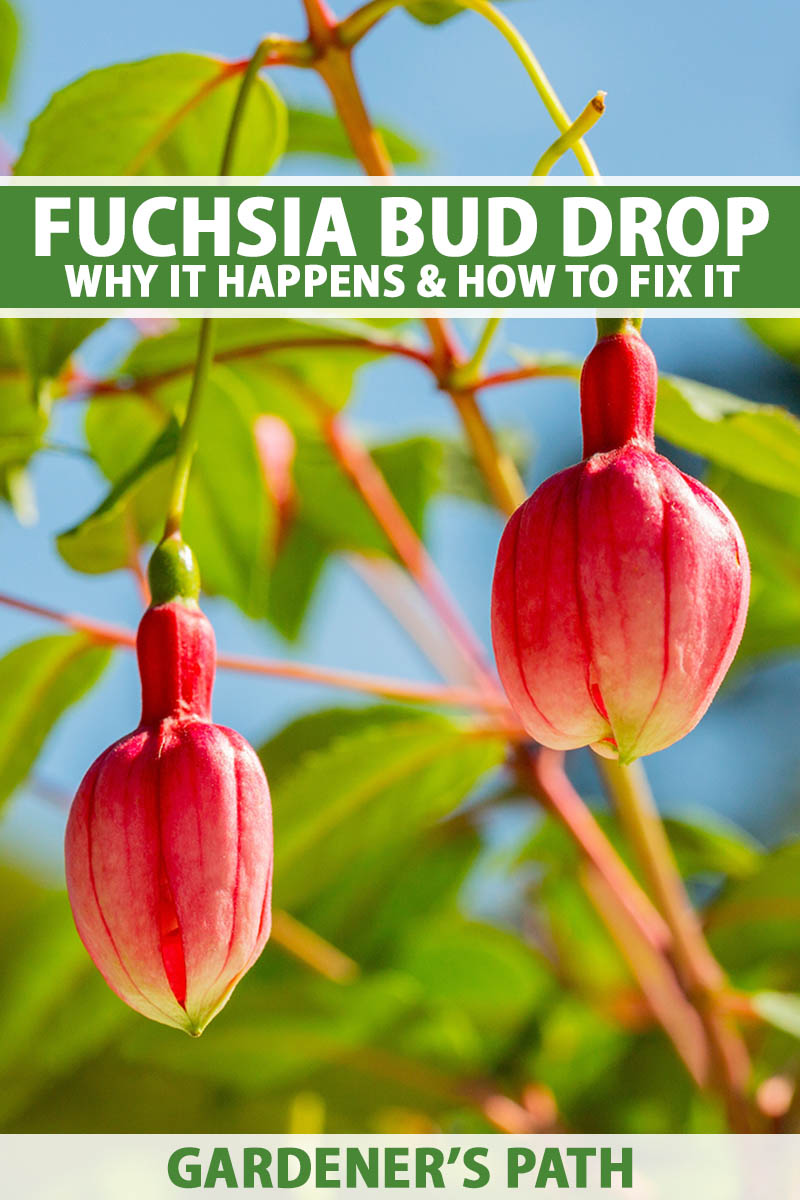
We link to vendors to help you find relevant products. If you buy from one of our links, we may earn a commission.
Bud drop typically happens when a plant experiences some kind of adverse condition, and it decides that rather than expending energy on creating flowers, it’s going to conserve energy by ditching those little freeloaders.
It’s probably a smart move for the plants, but boy, is it frustrating for us humans who want nothing more than to enjoy the floral performance.
So, we’re going to talk about why buds drop from fuchsia plants and what you can do to fix it.
Here are the seven common reasons that your fuchsia might say “goodbye” to their buds:
7 Reasons Why Fuchsia Plants Drop Buds
1. High Temperatures
Fuchsia can withstand higher temperatures than many people realize. It’s actually the lack of water that really gets to them.
Having said that, depending on the species, they prefer temperatures in the 60s and 70s, but they can tolerate anything above freezing and ranging up to 95°F, provided that you keep them watered.
If they’re exposed to temperatures above 95°F for more than a few minutes, this might cause them to drop their buds.

Even if the plant recovers from the heat and looks totally normal again, buds might continue to drop for the next few days.
I know you can’t control the weather, but if you live somewhere that regularly experiences high temperatures, grow your fuchsia in containers so you can move them indoors during extreme heat.
Otherwise, if you have a heat wave, you might consider placing some shade cloth over in-ground fuchsias.
Either way, remember to keep them watered during the heat.
2. Lack of Nutrition
If your fuchsias don’t have enough food, they’ll stop producing flowers and might drop any existing ones prematurely.
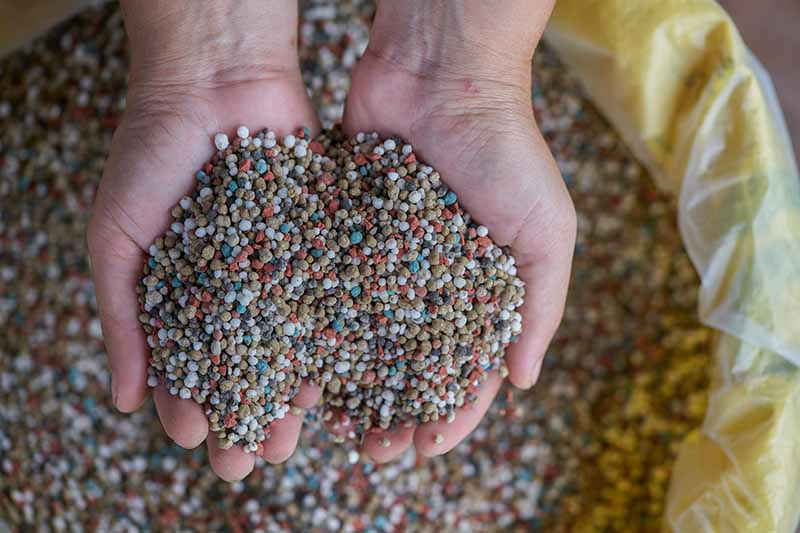
Those growing in the ground need less food than those grown in pots, since nutrients leach out more rapidly from containers.
Feed potted specimens every few weeks with a flower-specific fertilizer when in bloom.
I like Down to Earth’s Rose & Flower Mix because it’s OMRI listed and comes in a compostable container.
Down to Earth Rose & Flower Mix
It’s available at Arbico Organics in one-, five-, or 15-pound containers, so choose whatever works for you.
In the early fall, reduce feeding to just once a month, and stop when the plant is dormant.
Cut this program in half for fuchsias grown in the ground.
3. Not Enough Water
If your plant doesn’t get enough water, the first thing fuchsias will do is wilt.
If you don’t give them water right away, they’ll probably survive just fine, so long as you get to them sooner rather than later. But they will drop their flowers after prolonged periods of dryness.
If you know that your fuchsia went too long without water to the point where it wilted and had to be revived, and the buds started jumping off the plant within a few days, a lack of water is likely the cause.
The solution, of course, is to keep your plant appropriately watered. So long as it doesn’t experience continual drought, it will set new buds in no time.
4. Pests
Though it’s less common, pests such as aphids and whiteflies can cause buds to drop. This typically only happens if the plant is seriously infested and its vigor is reduced.
If your specimen is looking droopy and maybe a little yellow, take a good look to see if there are any flitting critters or tiny bugs slowly moving along the stems and leaves. If so, they could be causing the problem.
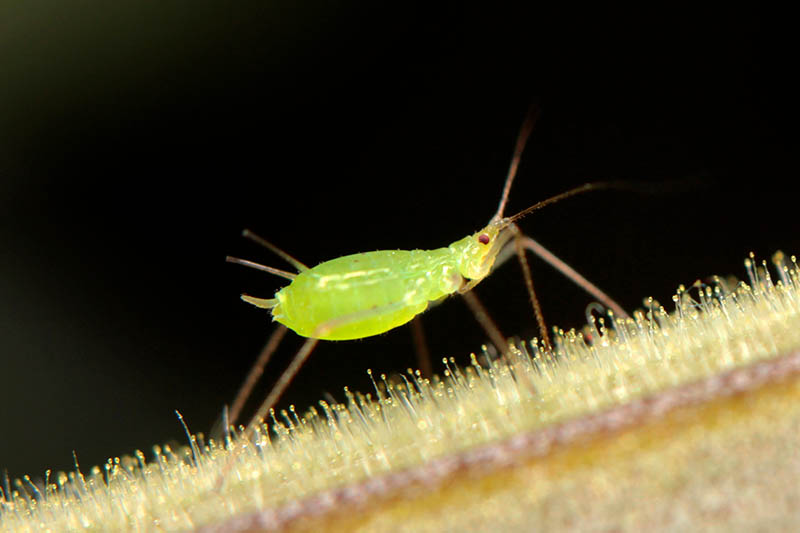
Eliminating these pests is generally not too challenging, and our guides to managing aphids and dealing with whitefly infestations will walk you through everything you need to know.
But it will probably take your plant a while to recover. In fact, if it was badly damaged, it might not bloom again at all this year.
Don’t lose heart. Overwinter it indoors or wait for the next year if you live in a suitable climate, and it should recover.
By the way, if the buds are vanishing altogether rather than dropping, you might have some squirrel friends visiting.
5. Rust
There are several fungal issues that will cause fuchsia to struggle, but among these them, rust is the one that will reliably cause bud drop.
Rust is caused by the fungus Pucciniastrum epilobii. When it’s present, the flowers, buds, and leaves will develop yellow splotches. After a while, these will shrivel up and fall off.
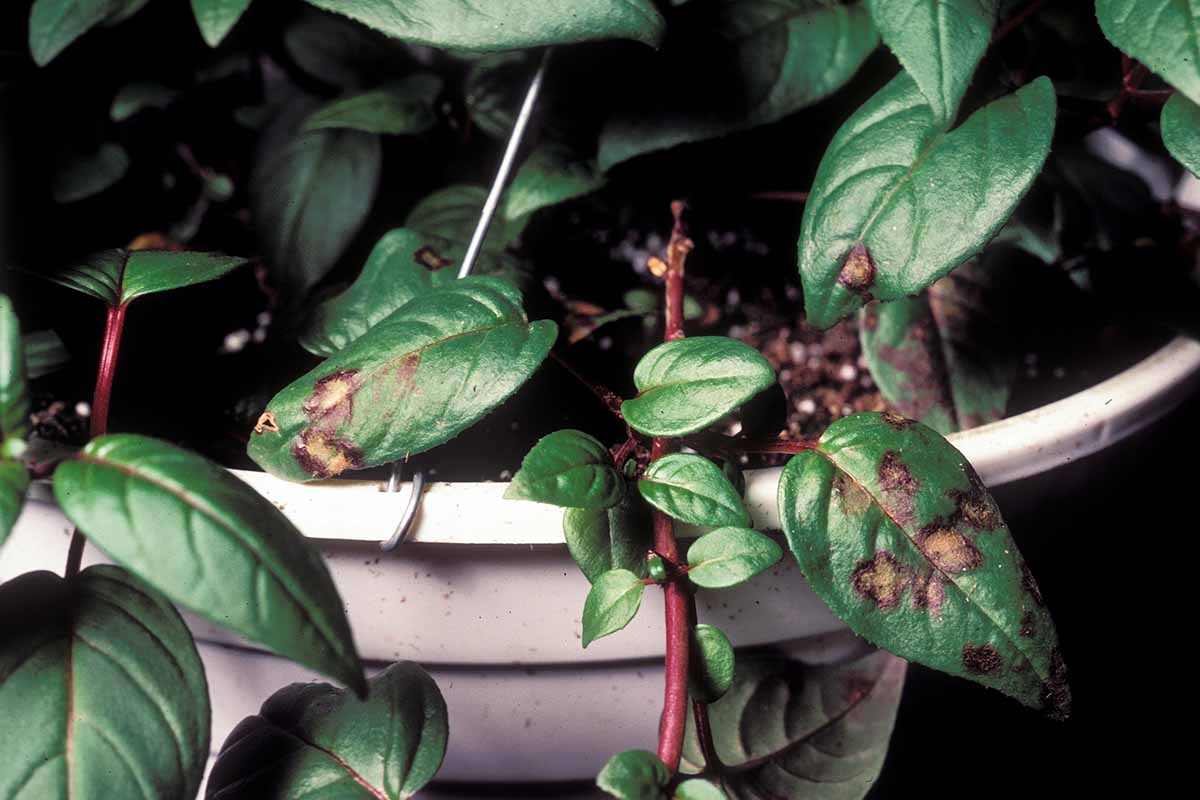
Of course, good garden hygiene and keeping pests away is always a good idea for avoiding diseases, but once they’re present, you’ll need to turn to appropriate fungicides.
Fuchsia species are sensitive to antifungal chemical sprays, but copper fungicide is generally well-tolerated. You might want to spray a section of your plant and wait a few days before spraying the rest. That way, you can see if it reacts poorly before spraying the whole thing.
I battle rust more years than not, and copper fungicide always works for me.
The quicker you address the problem, the more likely you are to get it under control in time for the plant to start blooming again before the frost.
I use Bonide Liquid Copper Fungicide because it’s reliable and has always gotten the job done for me.
Bonide Liquid Copper Fungicide
Arbico Organics carries it in 32-ounce ready-to-use, 16- or 32-ounce hose end, or 16-ounce concentrate containers.
6. Shock
When a plant is moved or repotted, this inevitably damages the root system to some degree, which can lead to shock. And when a fuchsia experiences shock, one of its first natural responses is to drop its flowers.
This defense mechanism allows the plant to focus on recovery rather than producing flowers, which is energy-intensive.
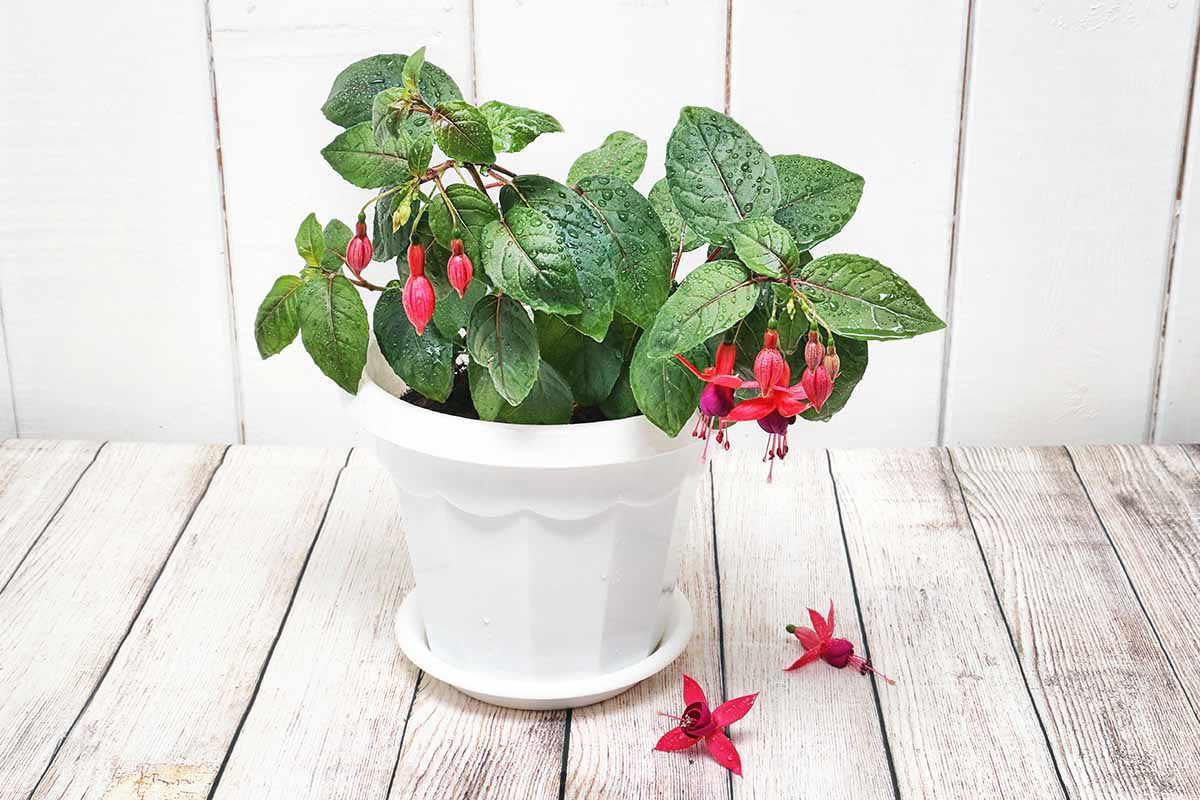
If you’ve recently moved or transplanted your plant and it drops its buds, don’t worry.
All you need to do is support the plant with the right water, food, and light exposure, and it will be blooming again in no time.
In the meantime, feel free to pinch the tips back a little to encourage new growth.
7. Too Much Water
Fuchsia loves water… but not too much.
Those grown in containers, and especially hanging containers, need more frequent watering than those in the ground. But it is possible to provide too much of a good thing.
Our guide to watering fuchsias has all the details you need to water appropriately, but in a nutshell, you want the soil to feel like a well-wrung-out sponge at all times. If it feels any wetter than that, it’s too wet.
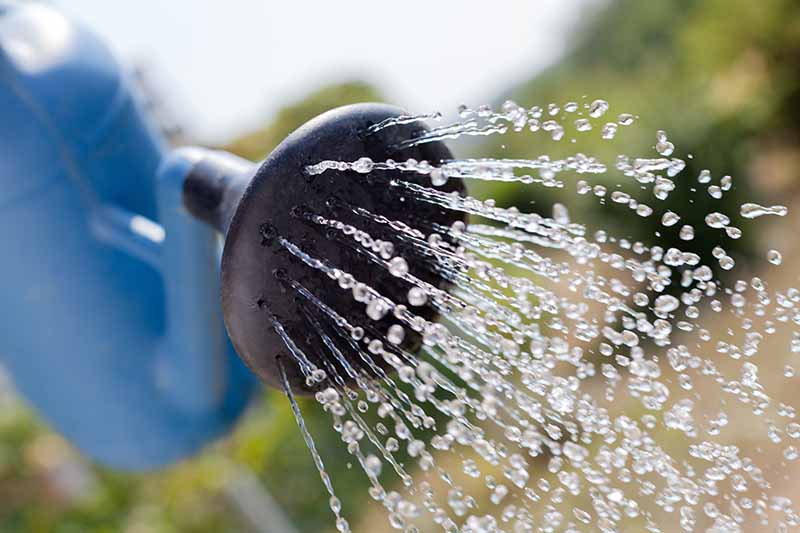
If your plant receives too much water for a long period of time, the roots will begin to drown, and it will drop any developing buds because it can’t support the expense of flowers when it isn’t able to take in the nutrients it needs.
You can help it to recover by reducing your watering schedule, but know that it may take a few weeks for new buds to form.
Stop the Drop
There’s no reason to suffer through the horror of watching the buds on your fuchsias topple to the ground. There are several common causes, but you can fix them all.
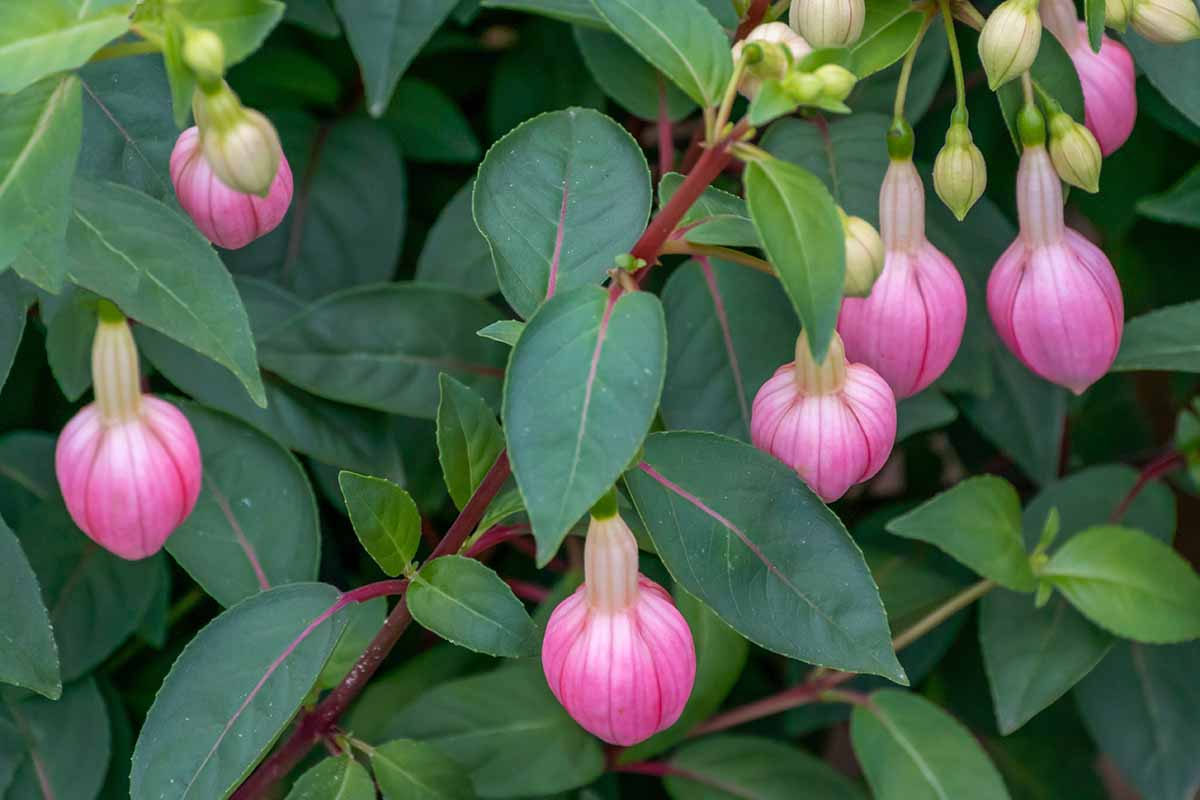
What’s causing your plants’ buds to drop? What kind of fuchsia are you growing? Tell us all about it in the comments.
Once you get your flowers back, you might be looking for some other tips for helping your fuchsias to thrive. If so, here are a few guides that are worth checking out:

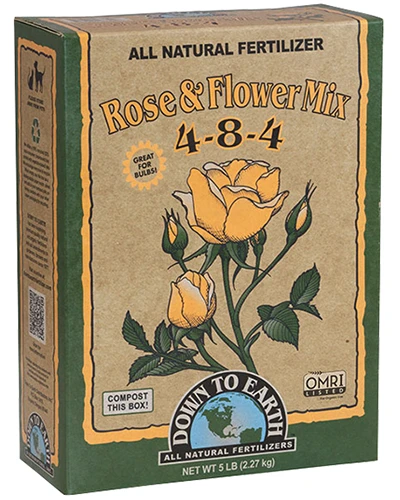
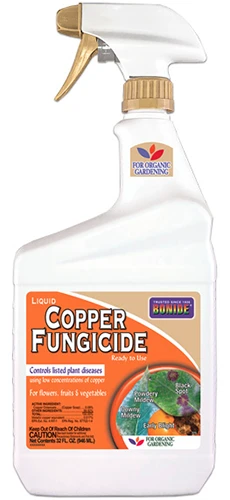



Hi, I bought a fuchsia hanging basket from the local garden center and the next day it started dropping buds. I went through and pruned it but it’s only gotten worse. We haven’t had much sun, and I placed in on the porch where if we did get sun, it would get just a little bit in the morning. The soil feels moist so I don’t believe I have over watered. Hard to know if it’s under watered. I lifted the plant out of the basket and root system looks fine. I did find a couple of small green bugs.… Read more »
Hi Kristen, I’m sorry to hear that. Honestly, it could be as simple as a change in the environment causing the buds to fall. Just moving the plant from the store to your house could shock it. Fuchsia is one of those plants that toss their buds as a safety mechanism but it doesn’t necessarily mean anything serious is wrong. Fuchsia can tolerate a bit of dryness without dropping buds, so I would worry more that they’re too wet rather than too dry. It sounds like it’s in the perfect amount of sun, depending on where you live. When you… Read more »